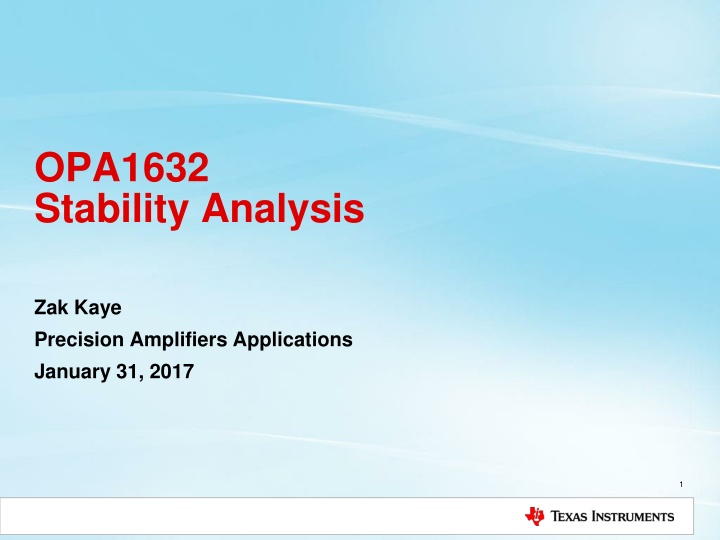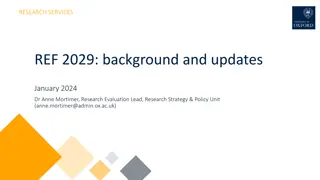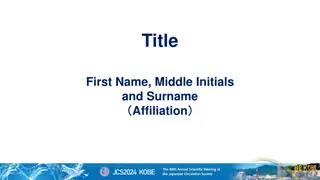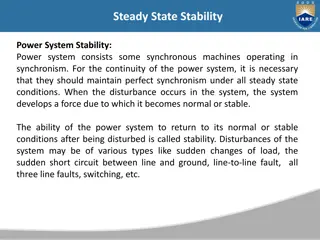
Precision Amplifiers Stability Analysis and Design Techniques
Explore stability analysis and design strategies for precision amplifiers using the OPA1632. Learn how to optimize loop gain, mitigate instability, and enhance performance through Riso and dual feedback techniques.
Download Presentation

Please find below an Image/Link to download the presentation.
The content on the website is provided AS IS for your information and personal use only. It may not be sold, licensed, or shared on other websites without obtaining consent from the author. If you encounter any issues during the download, it is possible that the publisher has removed the file from their server.
You are allowed to download the files provided on this website for personal or commercial use, subject to the condition that they are used lawfully. All files are the property of their respective owners.
The content on the website is provided AS IS for your information and personal use only. It may not be sold, licensed, or shared on other websites without obtaining consent from the author.
E N D
Presentation Transcript
OPA1632 Stability Analysis Zak Kaye Precision Amplifiers Applications January 31, 2017 1
Design 2
Analysis 3
Single Sided Analysis Simplify the schematic to a single sided representation for the fully differential amplifier. It now looks like a classic inverting op-amp. 4
What Next? All signs point towards severe instability You need to make the 1/ curve intersect the Aol curve with a lower rate of closure. A capacitor in the feedback network will only help if you have a lot of gain to manipulate. Solution: Riso + Dual Feedback 8
Riso + Dual Feedback R1 15k C1 470p Vo V- 4 2 - Riso 108 6 Vload ++ 7 3 OP AMP Cload 10n Rload 250 + Vin V+ 9
Riso + Dual Feedback Riso adds a zero to cancel the pole in the capacitively loaded Aol curve 1. Find the frequency, fZERO where the magnitude of Aol 1/ = 20dB 2. Calculate the value of Riso to set the zero at fZERO RISO Equation: 1 Riso= 2 fZERO CLOAD 1 Riso= 2 2.4473MHz 2.7nF Riso= ??? 10
Riso + Dual Feedback 3. Set feedback resistor, R1 100*Riso Set the feedback cap, Cf such that 6 RISO CLOAD CF 10 RISO CLOAD 4. RF RF Rule 4 ensures that the two feedback paths will never create a resonance that would cause instability lower values of CF = faster settling, higher overshoot R1 2.4k 6 24 2.7?? 270 CF 10 24 2.7?? 270 1.44nF Cf 2.4nF 11
Appendix: Op Amp Stability Reference For detailed, definition-by-example of 10 different ways to stabilize op amps driving capacitive loads, and additional technical information on solving op amp stability problems, visit the Texas Instruments E2E Forum at: http://e2e.ti.com/support/amplifiers/precision_amplifiers/w/design_notes/2645.solving-op- amp-stability-issues.aspx Download Part 1, Part 2, Part 3, and Part 4. For more in-depth learning about op amps and op amp stability look at TI Precision Labs at: www.ti.com/precisionlabs Analog Engineer s Pocket Reference A must-have for every Board/System Design Engineer Download: http://www.ti.com/lsds/ti/amplifiers-linear/precision-amplifier-support- community.page#pocketref Buy Hardcopy: https://store.ti.com/Search.aspx?k=pocket+reference&pt=-1 All Embedded Schematics in this presentation can be run in the Free TINA_TI SPICE simulator available at: http://www.ti.com/tool/tina-ti 15


















